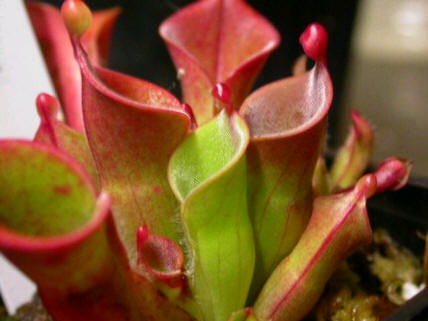 Growing Heliamphora
Growing Heliamphora

H. minor Grown by Jeremiah
Heliamphora are generally regarded by carnivorous plant enthusiasts as one of the more difficult plants to maintain in cultivation. They require cool (the "highland" species) to warm (the "lowland" species) temperatures with a constant and very high humidity and bright light. The highland species, which originate from high in the cloudy Tepui mountaintops, include H. nutans, H. ionasii, and H. tatei. The lowland Heliamphora, such as H. minor and H. heterodoxa have migrated to the warmer grasslands at the foot of the Tepuis.
Shredded, long-fibered or live sphagnum moss is preferred as a soil substrate, often with added horticultural lava rock, perlite, and pumice. The substrate must always be kept moist and extremely well-drained. Misting Heliamphora with purified water is often beneficial to maintain high humidity levels.
Propagation through division only has a limited rate of success, as many plants that are divided go into shock and eventually die. Germination of Heliamphora seed is achieved by scattering it on milled sphagnum moss and keeping in bright light and humid conditions. Seed germination begins after many weeks.